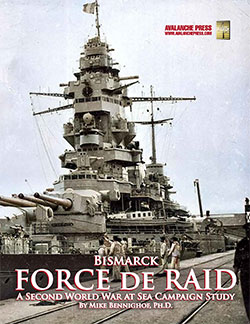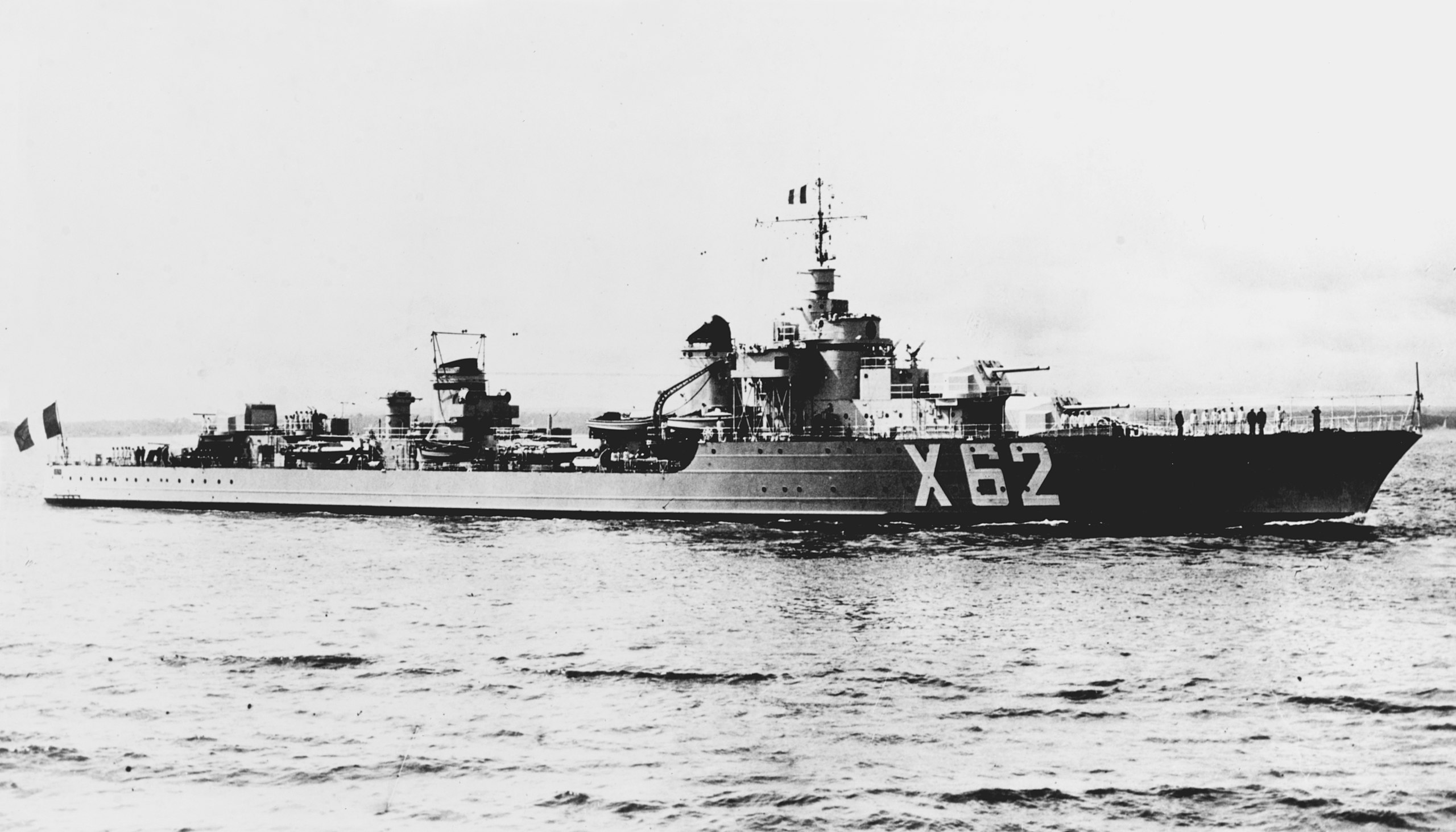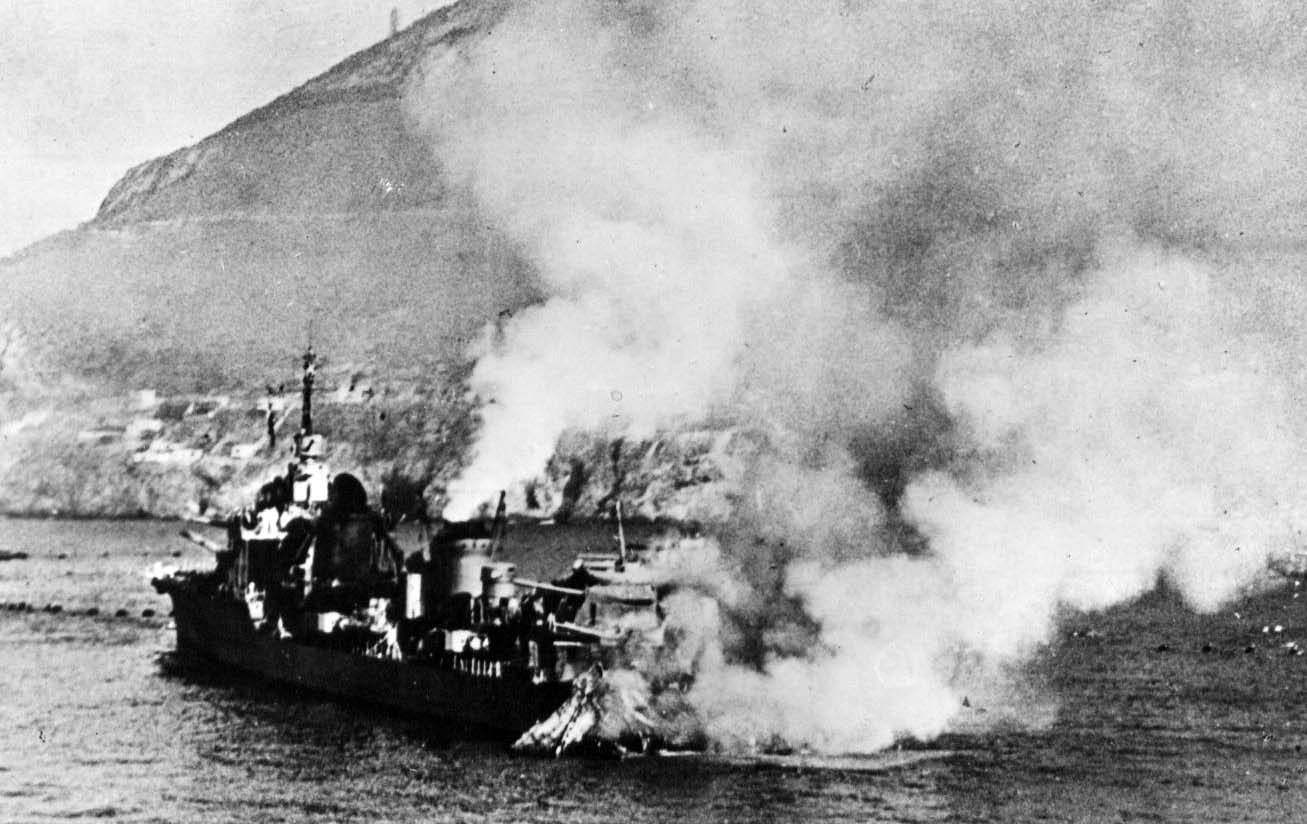Force de Raid:
French Super Destroyers
by Mike Bennighof, Ph.D.
June 2023
 France’s series of contre-torpilleurs, or large super-destroyers, would reach its zenith with the Mogador class, “destroyers” approaching the size of some navies’ cruisers. Where previous contre-torpilleurs had been designed to operate in flotillas and battle enemy destroyers, Mogador was seen as an essential companion to the new fast battle cruiser Dunkerque. France’s series of contre-torpilleurs, or large super-destroyers, would reach its zenith with the Mogador class, “destroyers” approaching the size of some navies’ cruisers. Where previous contre-torpilleurs had been designed to operate in flotillas and battle enemy destroyers, Mogador was seen as an essential companion to the new fast battle cruiser Dunkerque.
Design work began in 1931, but proceeded slowly due to international arms limitation talks and the financial state of the French government budget as the Great Depression took hold keeping the requirements in flux. Finally in early 1933 things became clear: the new super-destroyer’s role would be to seek out the German fast armored cruisers, operating in concert with Dunkerque to guide the battle cruiser to its target. The 1930 London Naval Treaty exempted France and Italy from the limits on destroyer size (1,880 tons’ displacement) and main armament (130mm/5.1-inch guns), and the Marine Navale intended to take full advantage of this loophole.
To accomplish that task, the new boat (even at this size, a destroyer is still a “boat” and not a “ship”) would have to be even larger than previous contre-torpilleurs, and durable enough to operate in the North Atlantic. It would need a powerful armament, both guns and torpedoes, in case it had to try to slow the enemy armored cruiser on its own. And it would need the speed to easily escape the armored cruiser or close for a torpedo run, and the range for extended operations.
All of those requirements show that the Marine Nationale took very seriously the proposition that they might be forced to confront the German Navy in the North Atlantic without the aid of Britain’s Royal Navy. That’s the premise of our Campaign Study, Bismarck: Force de Raid, where Mogador and her eventual sister Volta play the central role for which they were designed and built.

French contre-torpilleur Volta, seen in August 1939.
The Service technique des constructions navales (STNC; the naval architect department) produced a design for a very handsome ship. A sister, Volta, was authorized in 1934 to accompany the second battle cruiser, Strasbourg, on the same raider-hunting mission. Both were laid down in 1935, Volta actually hitting the slipway ahead of Mogador.
These would be very large destroyers, coming in at 2,884 tons’ displacement, and 131 meters long – easily the largest destroyers to actually see service during World War II. Both made an astonishing 43 knots sustained speed (eight hours’ worth) on trials, a world record at the time for vessels of their size. In service they could easily make 35 knots in heavy seas and 40 knots in moderate waves. Their propellors could not withstand the stresses induced by those speeds for very long and needed constant replacement.
The pair produced that speed thanks to a very fine hull form, and a massive power plant pumping out 92,000 horsepower in normal service and 120,000 when forced (considerably more than any French cruiser, and approaching the output of the 26,000-ton Dunkerque). They carried 710 tons of fuel oil, good for a radius of 3,350 nautical miles at 15 knots (impressive for a destroyer, but about half the range of a contemporary French light cruiser).
Armament consisted of eight 138.6mm (5.5-inch) Mle 1934 guns, in four twin mountings, what the manufacturer Saint-Chamond called a “pseudo-turret.” The pseudo-turret did not have a revolving barbette below it like a true turret; rather, the gunhouse with the guns within (the visible part) rotated around the ammunition hoist, which remained in place. There was no armor protection, with the rear of the gunhouse protected only by a canvas curtain. The 138.6mm round came in two pieces, projectile and cartridge, which slowed the weapon’s rate of fire. The complicated ammunition-handling systems broke down constantly, and required an eight-man crew for each gunhouse.

Mogador shows off her forward pseudo-turrets.
Mogador and Volta were built during a time of considerable labor unrest in France including a general strike in May and June 1936. The new Popular Front government negotiated a pact guaranteeing a 40-hour week, two weeks of paid vacation, the right to collective bargaining and a repeal of taxes on World War One veterans’ pensions – all of these considered radical demands. The strikes and labor slowdowns not only caused late delivery of vital parts, but likely led to poorly-made parts as well. The rammer, projectile and breech of the 138.6mm gun did not always align, creating a jam that had to be cleared by hand. Designed to fire 12 rounds per minute, the Mle 1934 rarely exceeded half that rate and sometimes fell to just three or four rounds. The pseudo-turret did have power rotation and training, but the guns could not elevate sufficiently to be used in an anti-aircraft role. Given their slow rate of fire, this would not have been an option anyway.
Mogador also carried ten torpedo tubes, in one double and one triple mount on either beam. Anti-aircraft armament was limited to one (highly sophisticated) twin 37mm mounting and two twin mounts for 13.2mm heavy machine guns; additional light weapons were to be added during refits that did not take place before France’s June 1940 surrender.
Despite very cramped crew quarters, both Mogador and Volta were fitted as squadron flagships, with quarters for an admiral and his staff plus separate bathrooms and a dining hall. Senior officers also received comparatively lavish accommodations, and two separate galleys served junior and senior officers (plus separate galleys for junior and senior petty officers, and yet another for enlisted crew).
With all that space given over to food preparation and quarters for admirals who never arrived, Mogador could not carry enough men to man both the main armament and the anticipated additional anti-aircraft weapons: some of the gun crews from the turrets would have to exit them and operate the light weapons in case of air attack, which did not speak well for the boats’ defense against a sudden enemy appearance.
The big destroyers carried 32 depth charges during wartime, with two chutes for dropping them. They had sonar or other detection devices. They could both lay mines, with two rails and stowage for 40 mines, and sweep them, with two paravanes.

Mogador burns following British attack. July 1940.
Volta was launched in November 1936 and Mogador in June 1937; they commissioned in March and April 1939, respectively. The joined the Force de Raid at Brest upon the outbreak of war, and then spent the early months of 1940 receiving extensive refits. Afterwards they went to the new French naval base at Mers-el-Kebir in Algeria to confront the expected entry of Italy into the war, and were present when the British attacked the French fleet in July 1940. Mogador was heavily damaged, but brought to Toulon for repairs. Both vessels were scuttled at Toulon in November 1942 to prevent their capture by the Germans or Italians.
On paper, at least, these were extremely impressive warships, a mixture of speed and firepower unmatched by any other destroyer. In practice, their balky main armament would have made them largely ineffective in a surface action, while their ridiculous admiral’s suites hampered the operation of a proper anti-aircraft armament. With an effective dual-purpose main battery and enough bunk space for a crew to operate all the weaponry, they could have been highly effective. As it stood, they contributed nothing to the defense of France.
Nevertheless, the Marine Nationale planned to order four more examples under the 1939 estimates, to form two three-ship divisions, each of which would support one of the battle cruisers in their hunt for German raiders. Those orders were suspended when France declared war on Germany in September 1939, with only the first close to being laid down. In April 1940 the order came to resume construction, along with a switch of the main armament from the near-useless 138.6mm twin mounts to the dual-purpose 130mm Mle 1935 carried by the new Le Hardi class destroyers and Dunkerque-class battle cruisers. Four of the torpedo tubes would give way to additional light anti-aircraft weapons. It’s not clear whether they would have had admiral’s quarters.
 Mogador and Volta appear in Second World War at Sea: Bismarck, but don’t get a lot of use; they see a great deal of action in the Campaign Study, Bismarck: Force de Raid. The four additional units, ordered but never built, appear in the alternative-history expansion set The Cruel Sea. Mogador and Volta appear in Second World War at Sea: Bismarck, but don’t get a lot of use; they see a great deal of action in the Campaign Study, Bismarck: Force de Raid. The four additional units, ordered but never built, appear in the alternative-history expansion set The Cruel Sea.
You can order The Cruel Sea right here.
You can order Bismarck Playbook Edition here.
You can order Bismarck: Force de Raid here.
Triple Bismarck
Bismarck (Playbook edition)
Bismarck: Force de Raid
Journal No. 31: Deluxe Bismarck
Retail Price: $112.97
Package Price: $90
Gold Club Price: $72
You can order Triple Bismarck right here.
Sign up for our newsletter right here. Your info will never be sold or transferred; we'll just use it to update you on new games and new offers.
Mike Bennighof is president of Avalanche Press and holds a doctorate in history from Emory University. A Fulbright Scholar and NASA Journalist in Space finalist, he has published a great many books, games and articles on historical subjects; people are saying that some of them are actually good.
He lives in Birmingham, Alabama with his wife and three children. He will never forget his Iron Dog, Leopold.
Want to keep Daily Content free of third-party ads? You can send us some love (and cash) through this link right here.
|
